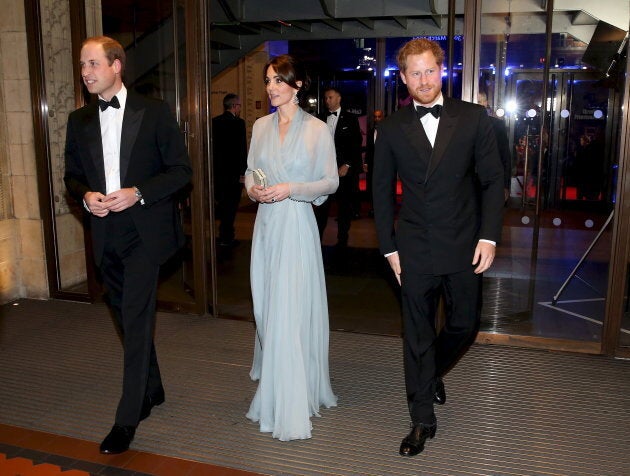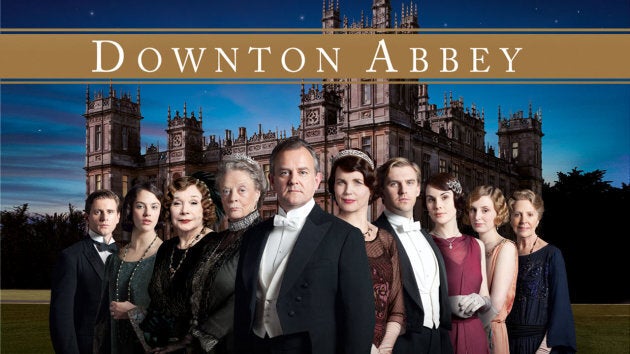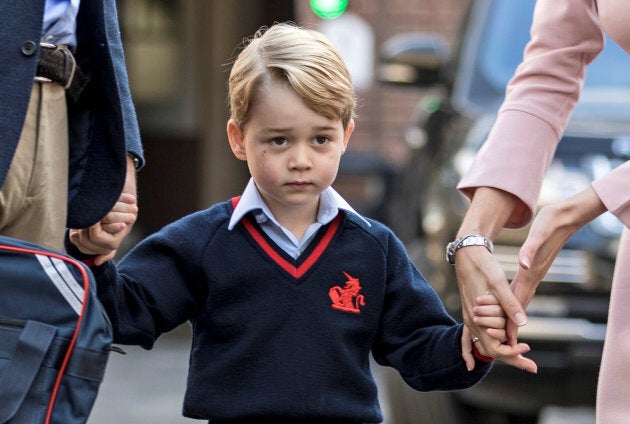The English peerage system is a tricky one to navigate. Most of us are familiar with the terms queen, king, prince, and princess, but as many royal watchers will tell you, the media so often get the titles wrong.
One of the biggest mix-ups is when people call Catherine, the Duchess of Cambridge, "Princess Kate," and you'll often find a debate in the comments section of any article focusing on how to properly address the duchess.
As for Kate Middleton's brother-in-law, Prince Harry, if he marries girlfriend Meghan Markle, both Harry and Markle would get titles, with many predicting that Harry would be named the Duke of Sussex, meaning that Markle would be the Duchess of Sussex. However, Elle.com notes that the prince could be given the Duke of Clarence, Oxford, Cumberland or Buckingham.

To complicate matters, the Queen's four children are princes and a princess, but they also hold other titles such as duke and earl. As confusing as it may sound, there is a basic explanation to it all.
So should you be planning a trip across the pond and will be mingling with some of Britain's finest or just want to impress your family and friends at your next gathering, this guide to English nobility titles should help you set the record straight.
1. Queen/King
As sovereign, the king or queen outranks everyone. They have the power to grant all other titles.

2. Queen Consort
The queen consort is the wife of the king. While more commonly referred to as queen, she does not hold any power.
3. Prince/Princess
A prince or princess is the child of the monarch or they inherited their title from their father or mother. This is why it is incorrect to call Kate Middleton "Princess Kate" because to have the princess title before her name she would have had to be born with it.
However, it is correct to call her Princess William of Wales because in the United Kingdom a woman adopts her husband's title when they are married. But since that would be overly formal, she is referred to as her other title, Catherine, the Duchess of Cambridge.
The same rule goes for the late Diana. Despite commonly being referred to as Princess Diana, her correct title was Diana, Princess of Wales.

4. Duke/Duchess
A duke or duchess is the highest of five degrees in British peerage. Traditionally, sons of the monarch were given a dukedom when they came of age, but now they are more commonly granted when they are married. For example, when Prince William wed Kate, they were given the titles of the Duke and Duchess of Cambridge.
With not many dukedoms to hand out at the moment, a likely choice for Prince Harry when he is married will be the Duke of Sussex, no matter if he marries his current girlfriend, Meghan Markle, or a future partner. Although, the Queen could choose not to grant him a title, leaving it until Prince Charles is king.
5. Marquess/Marchioness
The second degree in British peerage, marquess/marchioness was created for title holders on the Welsh and Scottish Marches, or border territories. The highest ranking marquess in England is Nigel George Paulet, 18th Marquess of Winchester, who currently lives in South Africa. However, the most famous marquess would be former British Prime Minister Robert Gascoyne Cecil, 3rd Marquess of Salisbury.

You may be familiar with the marquess title because of the character Lady Edith Crawley on the show "Downton Abbey." In the final season, she marries a marquess, gaining her a higher title than her elder sister, Mary, who will inherit the Countess of Grantham title from her father which is one step down the ladder.
6. Earl/Countess
The third degree in the peerage system since the reign of King Richard II are either life creations or inherited from their father. The most famous of these would be Prince Edward, Earl of Wessex, who is the Queen's youngest child. His wife, Sophie, was also granted the title Countess of Wessex at the time of their wedding.
He became the first prince since the Tudors to take the lesser title of Earl when he was wed, as it is expected he will take on his father's Duke of Edinburgh title when Prince Philip dies.
Keep Up With The Royals
Get our weekly email round-up of all things Royal.
7. Viscount/Viscountess
They hold the forth degree in British peerage and are often the child of an earl, although the title could also be granted. The Earl and Countess of Wessex's son, James, Viscount Severn, takes one of his father's subsidiary titles. His elder sister, Lady Louise, did not inherit the title as at the time of her birth the Letters Patent stated that the title would be passed to the eldest male heir.
This was changed before the birth of Prince William and Kate Middleton's son, Prince George, so if the Duke and Duchess of Cambridge had a daughter first, she would have outranked any possible future brothers.

8. Lord/Lady
Barons, viscounts, earls, marquesses and their female counterparts can all be referred to as lord or lady instead of their full title, as can their children.
9. Baron/Baroness
The fifth or lowest rank in the peerage system, the king's tenant-in-chief is sometimes a land-holding nobleman, and the title is often hereditary. In England, they are referred to as barons whereas in Scotland they would be lord of parliament.
There are more barons or lords of parliament than any other peerage with a current 426 titles. Some members of the Royal Family hold a baron title. Charles, the Prince of Wales, is also the Baron of Renfrew, and his son, William, is also the Baron of Carrickfergus. Prince Andrew, the Duke of York, is also the Baron of Killyleagh.
10. Life Peer
A life peer is an honour granted to an individual and cannot be passed down to their children. Currently, the recipients are suggested to the Queen by the prime minister and are announced at times such as the New Year Honours List and the Birthday Honour List. Famous life peers are Sir Elton John, Dame Helen Mirren, and Sir Ian McKellen.
Also on HuffPost: